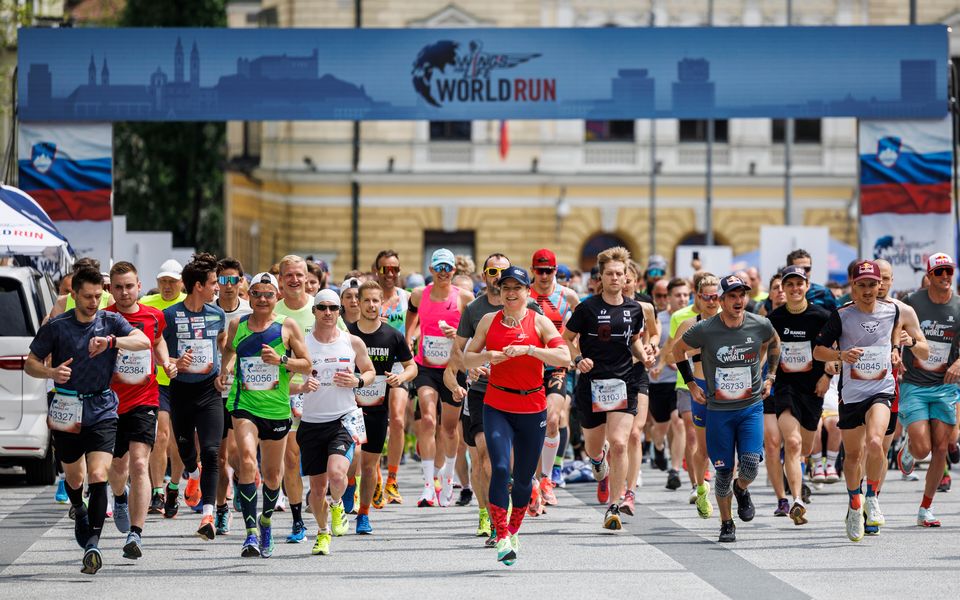
Wings for Life World Run 2024: a record-shattering 265,818 participants raised 8.1 million euros!
A race for change: Wings for Life World Run x F.E.A.R MKE

How Edwin Munoz plans to ride across the country using a hand cycle

Race day is almost here! Register and help us break the record

Your checklist for the Wings for Life World Run

Get ready for an amazing race day Audio Experience!

Boost your favourite runner

Nashville Girls Who Walk forms a Wings for Life World Run team

Meet Zack Collie, a new Wings for Life ambassador

Clinical trial making exciting progress, thanks to you

How to team up with your sporting hero for race day

It's time to lace up for the largest running event in the world

10th Wings for Life World Run: A record-breaking 206,728 participants raised 5.8 million euros!

Nina Zarina: The queen of the Wings for Life World Run is expecting

How to experience the Wings for Life World Run live

Superstars in hot pursuit and out ahead

The Nogo Trap

How music helps us run faster

Action: Make five out of four!

7 projects with promise

Start with a work of art!

A question of muscle power

You are what you eat: food is fuel

The Wings for Life World Run Couple: Opposites Attract

10th Wings for Life World Run: Hope is running high
Why more people are preferring meaningful gifts to material goods

Wings for Life World Run & International SCI Day: Raising awareness of spinal cord injury

Wings for Life World Run 2022: Runners raised 4.7 million euros for the search for a cure

Fight Song: Mike Mac's new Wings for Life anthem

Not registered yet? Be part of a major global event

Five reasons why you should join the Wings for Life World Run on May 8

They're coming to get you! The Catcher Car drivers

Get to know inspirational photographer Ydwer van der Heide

Run for your mind! How running boosts your mental strength

I'm Dianne Vitkus and this is my story

How to boost your running strength

VIDEO: Three women, one dream

How to build the best Wings for Life World Run team

Tom Evans’ personal tips for the best running gear

A fresh new collection for the Wings for Life World Run

How to run your first 5K

Catch me if you can

Tech firms and legendary team collaborate for Wings for Life

Anita Gerhardter Interview: "The run has its own unique magic!"

100 Days to go until Race Day!

Gift ideas for runners

What is the Wings for Life World Run?

How to run faster and longer: the ultimate guide

The 2021 Audio Experience Highlights

Here’s to you, Wings for Life World Runners!

The Wings for Life World Run 2021 was packed with dream teams

184,236 Wings for Life World Runners set historic record

Eat right to run your best – here's how

The inspirational story of motorbike accident victim, Sandile Mkhize

Sneak Peek: Discover the new Audio Experience

Join a team and have even more fun!

Tune in to the ultimate Wings for Life World Run playlist for training and race day!

"You’re braver than you think"

When Florian Neuschwander blitzed the 100 km indoor running record in 2021

Wings for Life World Runners United

Getting your running mojo back

A heartfelt thank you

Aaron Baker: Learning to walk again each day

Stepping into the future

VIDEO: Football superstar surprises paraplegic fan

For legends and T-shirt enthusiasts: registration for 2021 is open now

Get to know Nina and Michael, the 2020 Global Champions

"A craziness explosion and soooo much happiness."

Colorado pair make global impact with 24-hour spin on Wings for Life World Run

Wings for Life World Runners break records. Again.

Zebras, Treadmills and Angels: Some of the Wings for Life World Run 2020 Highlights

You’re the best. Fact.

How David Mzee walked a record 467m in this year’s Run

Over 77,000 of you ran for those who can’t!

Now in store: The new App comes with an exciting Audio Experience

Your limit, your motivation, your challenge!

Promising research

“Never Part of the Plan: A Story of Courage, Resilience and Gratitude”

Fill your days with more than 35 hours of Wings for Life World Run smiles

YOUR VIRTUAL TEAM MAKES THE WINGS FOR LIFE WORLD RUN EVEN BETTER

Mike Shaw: How running changed my life

Live every Thursday: Experts answer your questions

Your stories matter!

Running is out of this world. Fact.

Train with Runner’s World Germany for the Wings for Life World Run

Fundraising mastermind Charles Brice shares his insights – and his next goal

Join David Mzee on May 3

“The snow felt like confetti”: David Mzee on his Wings for Life World Run experience

Up to 50% off Wings for Life World Run kit over Cyber Weekend (Nov 29 to Dec 2)

Colin Jackson talks bananas

“Catch me if you can”: Wings for Life World Run registration now open!

The history of spinal cord research

The story behind a picture

Check out these big research numbers for 2019

After his personal Wings for Life World Run milestone, paralyzed David Mzee now walks across the finish line at Weltklasse Zürich

Q&A with Anita Gerhardter

Three ways to take part

The Wings for Life World Run love affair

“We are clearly on our way”: 2019 Wings for Life World Run highlights

Paralysis patient inspires over 120,000 participants with walk across Wings for Life World Run start

Why your donation will change lives